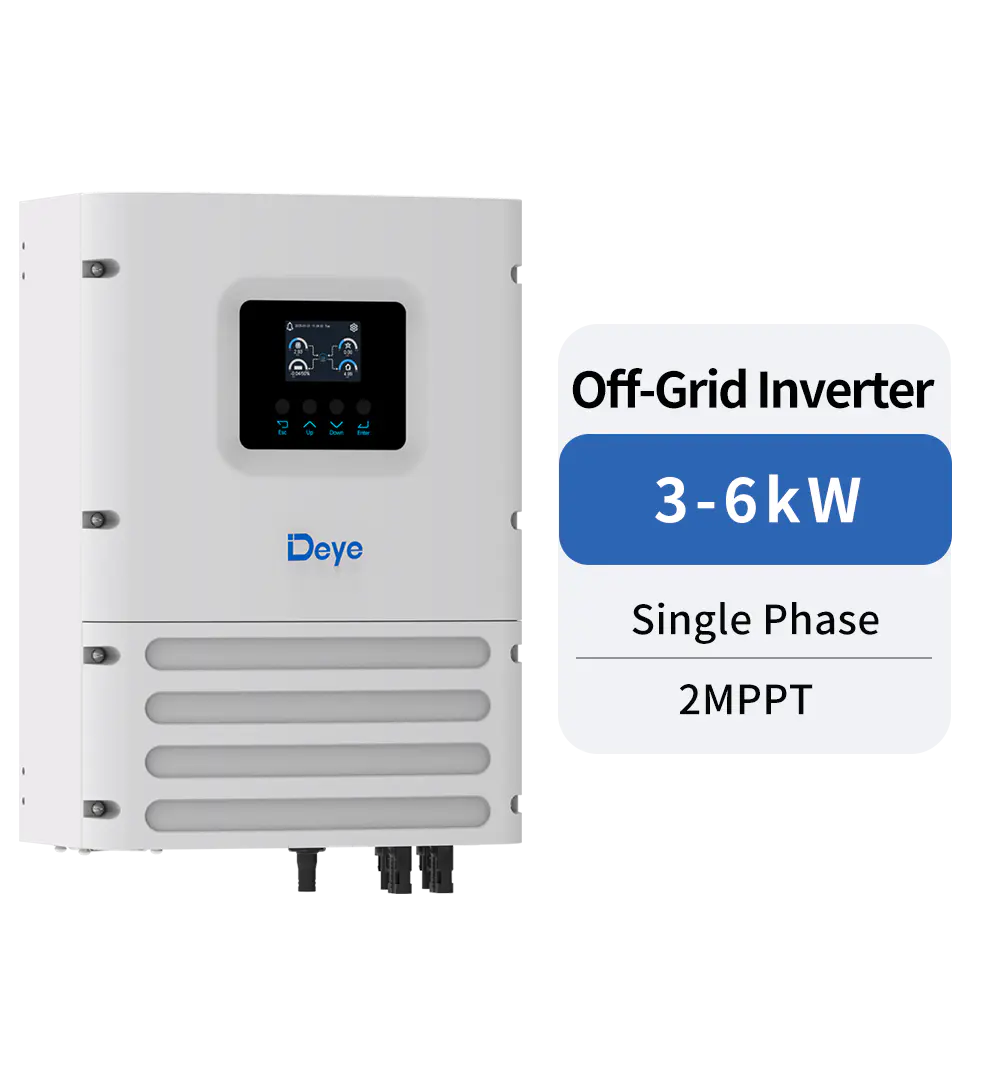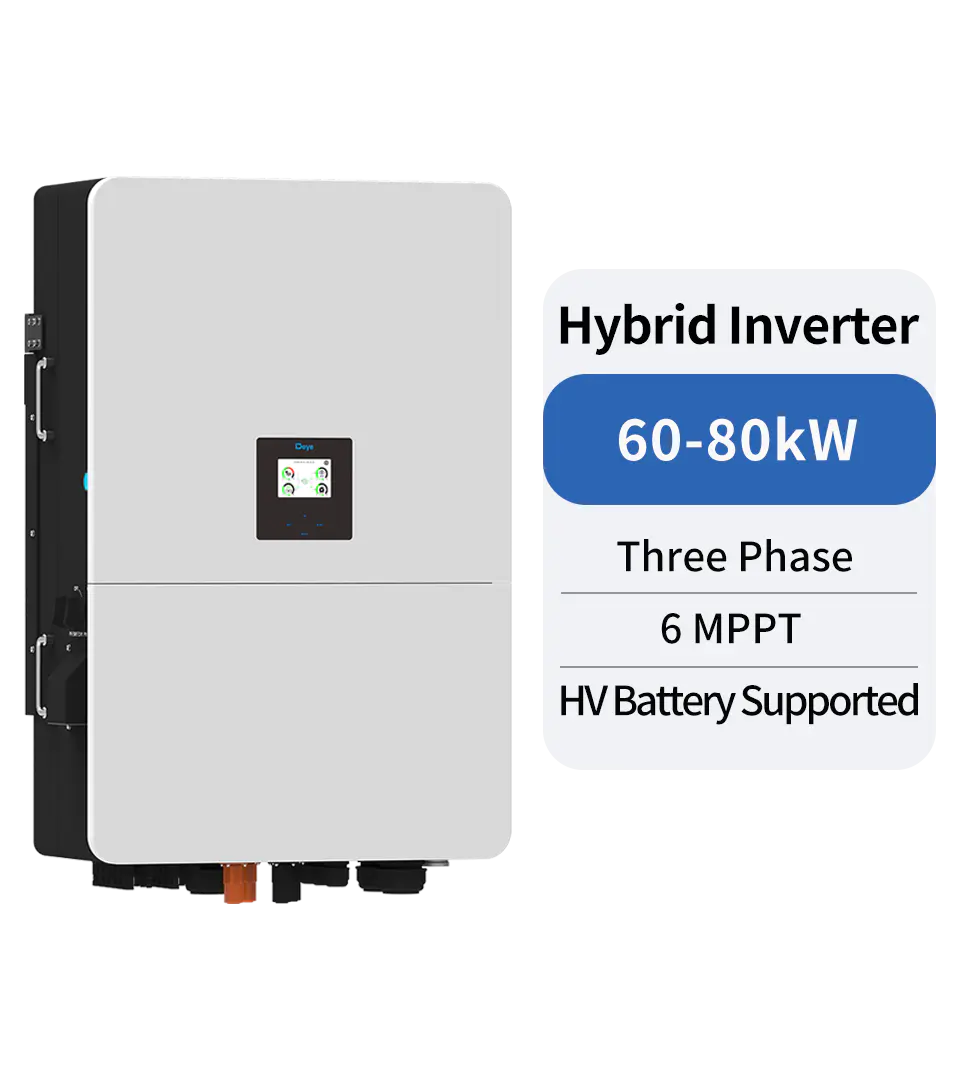Technical Topics
MPPT Solar Inverter
A max. power point tracking (MPPT) solar inverter allows you to adjust the output based on solar energy. This helps you to reduce your electricity bills and improve your energy production. MPPT solar inverters come with a variety of features, including energy harvesting software that gives you the proper energy harvest values for each channel. It also provides you with data on your inputs at any time, which can help you troubleshoot abnormalities on the inverter inputs.

Maximum Power Point Tracking (MPPT)
Choosing the better MPPT solar inverter for your system depends on your solar array's location and climate. It can improve your system's efficiency and output by as much as 30%. Deye inverters come with a variety of features, including max. power point tracking and variable voltage. To help you decide which model to choose, consider your needs and your budget. MPPT solar inverters can be quite expensive, but you can often recoup that expense by increasing your energy production.
MPPT trackers can be applied at the array level or module level. One type of MPPT tracker controls the current through all the modules in an array. This inverter is usually integrated into the array's main inverter. This is a great option because it simplifies maintenance and lowers the cost. In addition, a single large inverter/controller is usually more efficient than several smaller ones. A single tracker is also a cost-effective option. However, some modules have different I-V curves and therefore, may not operate at a single MPP.
Another benefit of an MPPT solar inverter is its ability to improve battery performance in cold weather. MPPT solar inverters are especially useful in winter, when sun hours are low and batteries need a boost to charge. While MPPT cannot keep up with the fluctuations in battery voltage and temperature, it can help you get the more out of your system. It can also be beneficial in hot weather.
When choosing an MPPT solar inverter, remember that your solar panels' voltage will be proportional to the max. power point. This means that your inverter will seek out that peak power. By analyzing the data from the PV modules, you can choose the more appropriate MPPT solar inverter for your solar array. A high-quality MPPT solar inverter will reduce the amount of energy loss and ensure the higher output possible.
Microprocessor controlled
An Intelligent Microprocessor Controlled Solar Inverter is a device that converts the variable DC output of a PV solar panel into AC power. This device works in tandem with a battery to prevent overcharging, overvoltage, and total battery drain. A microprocessor controlled solar inverter performs controlled discharges to ensure that the battery's charge level stays constant. It does this by monitoring the voltage and current of the solar panel.
Microinverters are typically installed on individual PV panels and handle up to 300 W of power. This allows them to be scalable and provide full DC/AC conversion. They also feature the ability to track max. power point. Some people also use these devices to feed excess power back into the power grid, speeding up their return on investment and helping them break free from relying on the power grid. The microinverters are much more efficient than traditional solar inverters.
While many manufacturers provide monitoring tools for their microinverters, not all of them offer such tools. This is because microinverters tend to wear out or break over time, which is expensive - they can cost $400 per truck roll! Moreover, if the device fails prematurely, it can cause property damage or even roof tile damage. It also increases maintenance costs, resulting in higher costs. However, these are just some of the disadvantages of using a Microprocessor Controlled Solar Inverter.
The Microprocessor Controlled Solar Inverter is a powerful device that makes it easy to install solar panels in your home. It can convert the output voltage from solar panels to AC and vice versa. Because it can adapt to the unique characteristics of each panel, a micro-inverter allows you to extract max. power from your solar panels. These micro-inverters are also ideal for those who want to save money upfront on installation costs.
Better than one
In more cases, it is better to use a dual MPPT solar inverter. Dual MPPTs allow you to have more flexibility in the design of your solar array, and they also have higher energy harvesting rates. Without dual MPPTs, you wouldn't be able to join two PV strings at different azimuths, which would be inefficient and potentially unsafe. Luckily, dual MPPTs can accommodate two different string angles, meaning you'll have more design options, and you won't need to buy a second inverter.
In addition to being more efficient, MPPTs can also be more costly than basic solar inverters. However, you should always consider the cost of an MPPT solar inverter when choosing one. If you don't, you could be losing up to 50% of your solar generated power, so you'll want to buy the right model for your needs. It's also important to choose a unit that supports both 50Hz and 60Hz frequency standards.
A solar inverter with Maximum Power Point Tracking is a good choice if you plan to connect your solar panels to the grid. With this feature, you'll have an extra power source whenever the sun shines. The ability to track max. power points helps to maximize the DC energy harvest. The better MPPTs have the ability to track the peak of the sun's rays and use this to their max. potential.
Unlike string inverters, microinverters can also be installed one at a time. However, microinverters are more expensive than standard ones, and they are recommended for those who need a fast shutdown, multiple panel orientations, or have shading issues. The cost of a microinverter is typically about $1,000 more than a standard inverter, which is an expensive upgrade.
Cost
An MPPT solar inverter is the heart of your home solar power system, converting DC power into AC. It is required for systems that produce 220V or 110V power. The inverter must have an MPPT charge controller, or Maximum Power Point Tracking, to ensure its efficiency. The MPPT technology makes the inverter more efficient and helps you generate more power than you can produce using solar panels alone.
The MPPT charge controller can be connected to the inverter through the battery junction. It can also be connected in parallel to maintain the same voltage of the panels while increasing the current. However, you should avoid direct connection between the charge controller and inverter. It is likely to damage the gadgets. MPPT solar inverters are expensive and are not for every home. But the money you save will be worth it in the long run.
An MPPT inverter is one of the more advanced solar inverters on the market. It works by adjusting the voltage and current of solar panels so that they produce the max. amount of power. It also tracks the peak power point on the solar panel and fixes the voltage at that point so that the max. power is produced. The MPPT will ensure better voltage-current ratios and give max. power to the inverter.
The cost of an MPPT solar inverter will depend on the type of system you are installing. Microinverters are available as single units or in pairs. They are recommended for home solar power systems with multiple orientations, shading issues, or emergency power. Compared to a standard inverter, a microinverter is approximately $1,000 more expensive than a 5kW home solar system. This difference in price is due to the microinverter's added features.
Installation
To install MPPT solar inverter, you should make sure you know how to connect your solar panel to the charge controller. Make sure you match the + and - signs on the panel to the corresponding lines on the charge controller. Once you've got the cables, connect the inverter to the battery using battery ring cables. Now you can start generating energy. The installation of MPPT solar inverter is simple, and you can easily install it on your own.
A solar array's Vpp is determined by its max. output, and the MPPT charge controller looks for this peak, then adjusts the output accordingly. The MPPT controller also measures temperature and other variables, so it adapts to these changes. This allows you to get the more out of your PV array, while maintaining a safe level of output voltage. If the sun is not shining, the MPPT controller will automatically adjust its output to minimize the risk of overcharging.
When installing an MPPT solar inverter, make sure that your solar panels have the same voltage ratings. You need to make sure that the operating voltage of the panel is several volts higher than the charging voltage of the batteries. If not, the energy generated by the solar panel will be reduced. However, this is a minor problem, as you can easily adjust the voltage of the solar panel. If you follow the installation instructions properly, you should have no trouble installing MPPT solar inverter.
After you've installed the MPPT solar charge controller, it's time to connect the temperature sensor. Make sure you install the inverter on a solid surface where it won't be damaged. Make sure the location of the MPPT solar charge controller is accessible at all times, and you should also be able to disassemble the system if necessary. Lastly, the ambient temperature should be at least -20°C.
PREV:Know More Types of Inverters
NEXT:What are type of Deye hybrid inverter
Share
Product recommendations
news recommendations
-

-
 Green Industry, Bright Future: Deye Distributor Summit – Dubai 2025 Concludes Successfully
Green Industry, Bright Future: Deye Distributor Summit – Dubai 2025 Concludes SuccessfullyIn November 2025, Deye Group successfully hosted the “Green Industry, Bright Future—Deye 2025 Dubai ...
-
 Deye’s Malaysia Johor Manufacturing Base Officially Breaks Ground — A Key Step Forward in Its Globalization Strategy
Deye’s Malaysia Johor Manufacturing Base Officially Breaks Ground — A Key Step Forward in Its Globalization StrategyOn October 2, 2024, Deye Group (hereinafter referred to as “the Company”) held a groundbreaking cer...

 China - 简体中文
China - 简体中文 Global - English
Global - English Brazil - Português
Brazil - Português Netherlands - Dutch
Netherlands - Dutch Italy - Italiano
Italy - Italiano Germany - Deutsch
Germany - Deutsch Spain - Español
Spain - Español France - Français
France - Français Vietnam - Tiếng Việt
Vietnam - Tiếng Việt Poland - Polski
Poland - Polski Australia - English
Australia - English


